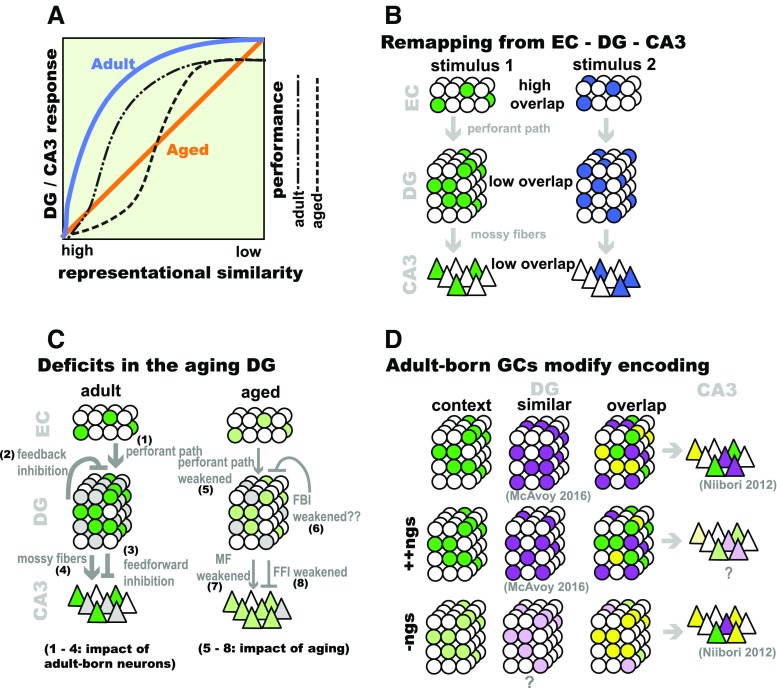Fig. 1.
Dentate gyrus (DG)–CA3 circuitry and pattern separation. (a) Schematic description of DG-CA3 blood oxygen level-dependent responses (left axis, blue and orange lines) and discrimination accuracy (right axis, dashed lines) in adults and aged individuals in a task in which image stimuli were presented and were varied on a continuum from repeat presentation, to similar items or lures, to novel foils (adapted from [14, 26], based on data presented in [23, 24, 72]). Aged individuals showed a failure to activate the DG–CA3 region when similar items or lures were presented. When explicitly tasked with identifying the images as novel or familiar, aged individuals performed more poorly when the images were most similar. (b) The DG performs pattern separation on incoming inputs from the entorhinal cortex (EC). The large number of DGCs relative to the EC (“input expansion”) and the sparse activation of the DG are thought to facilitate the orthogonalization of similar inputs into distinct outputs. (c) The DG is modified by both incorporation of adult-born DGCs and by aging. 1) Adult-born DGCs may be more responsive to weak perforant path inputs. 2) Adult-born DGCs recruit feedback inhibition (FBI) onto the DG, and (3) feed-forward inhibition (FFI) onto CA3. 4) Adult-born DGCs exhibit increased plasticity at the DG–CA3 synapse. 5) In aged animals, perforant path inputs to DG are weaker, and feedback inhibition (6), and feedforward inhibition (8), may be decreased. 7) CA3 exhibites higher basal activity and hyperexcitability. (d) Adult-born DGCs promote population- based coding in DG and CA3. Enhancing adult hippocampal neurogenesis (ngs) decreases overlap between DG ensembles encoding similar contexts [118]. Decreasing adult hippocampal neurogenesis increases overlap between CA3 ensembles encoding similar contexts [146]

